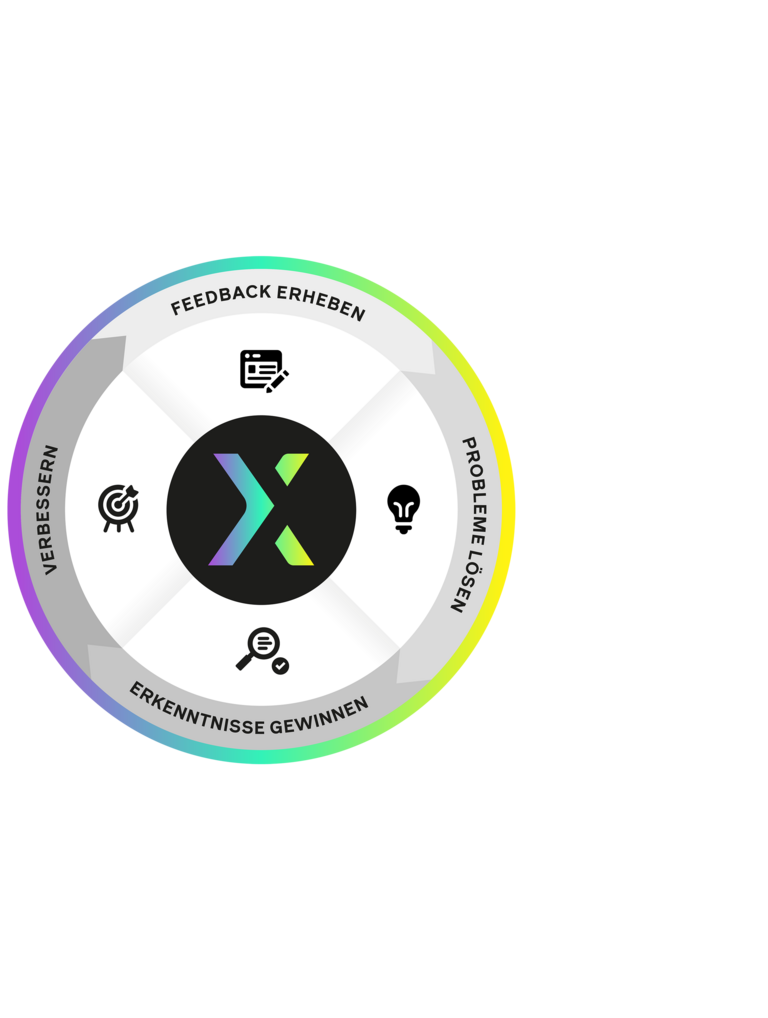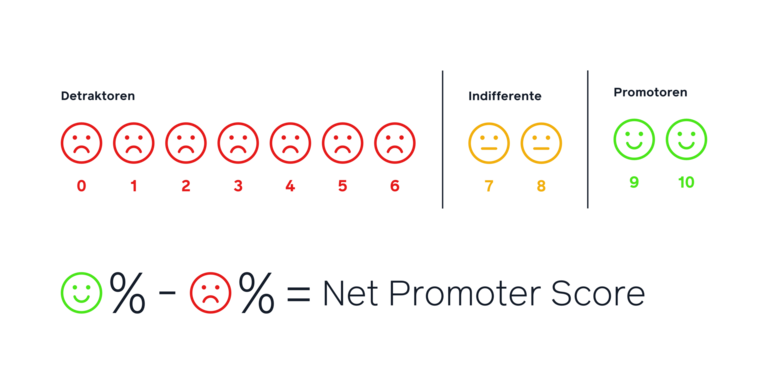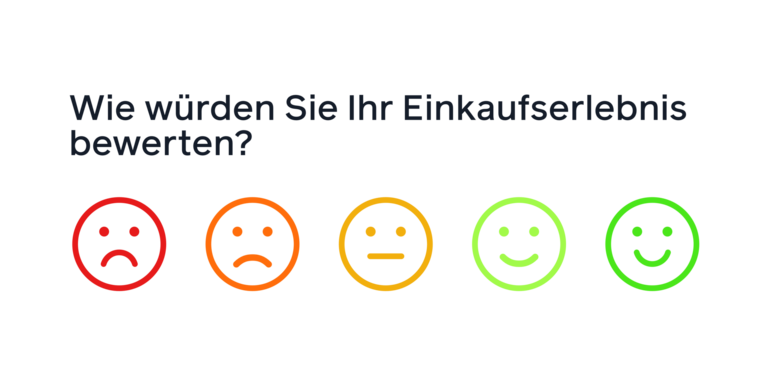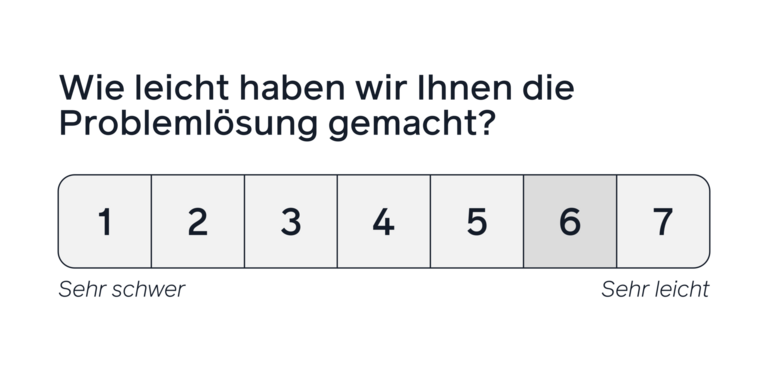Customer Experience Management
- What exactly is Customer Experience Management (CXM)?
- How is holistic CXM practised?
- Why is CXM so crucial for the success of a company?

For some time now, more and more companies have been concerned with offering the perfect customer experience and ensuring greater customer satisfaction. But what exactly is customer experience management, how is it implemented and what makes it so important for the success of a company?
Before we go into what customer experience management means, we will take a look at what is meant by customer experience (CX). In particular, we want to show at this point what relevance it has for companies.
So, what is the "Customer Experience"?
The customer experience is the totality of all experiences that customers have with a company.
The customer experience begins with the first contact (potential) customers have with a company. This first point of contact can be, for example, a post in social networks, an advertisement or the shop window of a shop.
The customer experience ends with the last contact that customers have with a company. This could be the completion of a purchase, the cancellation of a contract or a completed interaction with customer service.
Each of these contacts is also called a touchpoint. Classic touchpoints are:
The entire customer experience of the customers is therefore made up of all the experiences that they gather in the course of their interactions with the company at various touchpoints. It thus encompasses the entire customer journey.

Customer experience management is the practice that aims to improve the customer experience described above. This practice usually includes numerous processes that are combined in an overarching CXM strategy.
A holistic CXM strategy can be broken down into 4 specific building blocks. We refer to these as the IMPROVING EXPERIENCE approach:
1. listen & measure:
CX must be measured. Only those who actually know what customers' experiences are like can take care of improving them. The goal of this step is to collect the "voice of the customer". To do this, feedback data is collected continuously - ideally at as many touchpoints as possible. The goal is to paint as seamless a picture of the CX as possible.
2 Care & Engage:
Immediate problems require a quick solution. In other words, customers who report a poor experience should be proactively contacted by a company to resolve any outstanding issues. This can prevent a possible escalation.
3. analyse & understand:
Feedback data must be continuously analysed. This is the only way to gain real insights from the collected opinions, impressions, experience reports and other data sources.
4 Plan & Improve:
These insights can then be used to sustainably improve the CX. This involves identifying and eliminating recurring problems and friction points. Monitoring the success of these improvement measures and identifying further need for improvement then leads back to step 2 - whereby, of course, the goals set in step 1 should be continuously reviewed.
The main difference between Customer Service and Customer Experience Management is their respective scope.
CXM covers the entire customer journey from the first touchpoint to the last.
Customer support or customer service, as it is known from call centres and e-mail tickets, is a possible part of this customer journey. "Possible" because customers do not actually have to use the services of the customer service.
Often - although not always - customer service only becomes active when customers approach a company with a problem. Customer service is therefore reactive and not proactive.
However, CXM and customer service are by no means mutually exclusive - on the contrary: customer service is an important part of a holistic CXM strategy and should be firmly integrated into it.
Because solving concerns and problems quickly can increase customer loyalty in the long term and even increase customer lifetime value. What's more, recommendation rates also increase.
In addition, it is five to twenty-five times more expensive to acquire new customers than to retain existing ones. From this perspective alone, it makes sense for every company to focus on the loyalty and satisfaction of existing customers.
It is clear that customer satisfaction is important for a company. However, the impact this can have is often underestimated.
For example, a positive customer experience influences...
...how much money customers are willing to spend
...how much data they are willing to reveal about themselves
...what the public perception of a company is.
Conversely, a single bad experience is often enough to permanently lose customers.
The value that customers place on their customer experience has risen steadily in recent years. The global Covid 19 pandemic of 2020/21 has served to accelerate this development, especially in the digital sector.
So how do you measure the customer experience?
To make customer experience measurable, three key performance indicators (KPIs) are often used: the Net Promoter Score (NPS®), the Customer Satisfaction Score (CSAT) and the Customer Effort Score (CES).
All three metrics are numerical indicators that capture a specific facet of CX.

An NPS question usually looks like this:
"How likely are you to recommend us to a friend?"
The answer is measured on a scale of 0-10.
The NPS is calculated from the ratio of promoters to detractors in relation to the total number of respondents.
NPS = Proportion of Promoters (%) - Proportion of Detractors (%)
The NPS value always lies between -100 and +100. The higher the value, the better.
The NPS is therefore a metric that attempts to determine how likely a company, product or service is to be recommended to others.
Learn more about the Net Promoter Score and how to use it correctly here.

In comparison, the CSAT is more general and usually measures on a scale of 1-5 how satisfied customers were with a product, service or interaction. Here, too, a single question is usually asked:
"How satisfied are you with our product/services?"
Ratings are given on a scale of 1-5, more rarely 1-7. Classic examples of playful implementations of the CSAT question are 5-star ratings or scales with five different smiley faces.
The CSAT has the advantage that it can be used to see at a glance how high the general customer satisfaction is.

The Customer Effort Score is an indicator of how easy it was for customers to use a product or service. This includes, for example, the purchase process, commissioning, general communication or problem solving in the event of difficulties.
As with the other two KPIs, only one question is usually used.
Customer Experience Management is not something that can be done half-heartedly and "on the side". Hence the preceding step 0 of our IMPROVING EXPERIENCE approach.
However, this does not mean that the first steps towards holistic CXM have to be difficult. Quite the opposite. Because it is often important to define individual steps and to let a CXM programme grow piece by piece with the capacities of a company.
The emphasis here is on "individual", because creating a functioning CXM strategy can vary from company to company - at least when it comes to the specifics of implementation.
moveXM offers companies of all sizes a quick and easy entry into CX management. With flexible scaling options, you unfold your full potential - at your own pace.
After just two hours of set-up and live onboarding, both you and moveXM are ready to create outstanding customer experiences. Within 15 minutes you can create questionnaires and collect customer feedback.
With intuitive dashboards, automatic text analysis and modern AI, moveXM generates insights for you. This helps you achieve more revenue and profitability with minimal effort.
With moveXM you no longer leave customer satisfaction to chance. Our software is certified for security and quality. Create excellent CX - with excellent software
Ensure more turnover and ROI now! Contact us and receive individual consultation.